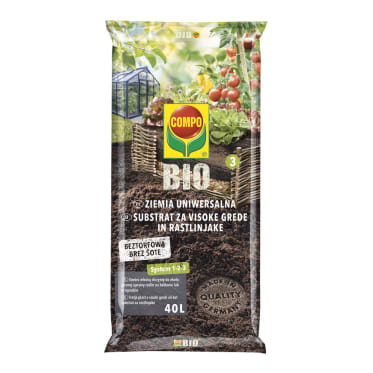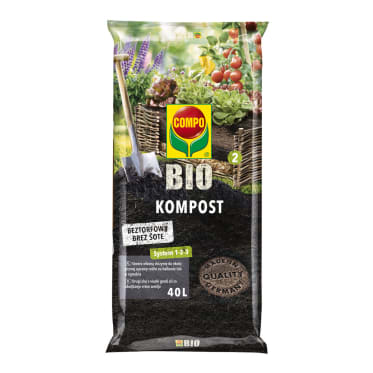Frequent search terms

- COMPO
- Guide
- Plant Care
- Basics
- Planting properly
- How it works: building and planting a raised bed
Building and planting a raised bed: how it works
Not only does a raised bed spruce up every garden and some balconies, it also offers numerous benefits: Plant care is easy on the back, vegetables and herbs benefit from higher ground temperatures and good soil. Voles and snails don't get their mitts on the harvest. For it to grow abundantly, a good foundation is important. Find out how to build a raised bed here.

Set up the raised bed
You can buy prefabricated kits for your raised bed or make it yourself. But before you get cracking, you should decide on the location. It is advisable to choose a spot in a North-South direction in order to capture the best of the sunlight.
Euro pallets are right on trend for raised bed bordering. They have a height of 80 cm. To ensure that the wood withstands bad weather, we recommend painting the slats with weather protection paint or spraying them, which is easier for the many corners and edges. With two brackets in each corner, screw the pallets together so that the top sides face inwards. Two long screws in each corner provide extra stability. It is really important to put down stainless and closely meshed wire on the ground, so that voles can't get through. Then line the interior (not the ground!) with pond liner. This works best with an electric tacker. The liner not only ensures that the soil and moisture remain in the bed, it also protects the wood against rotting.
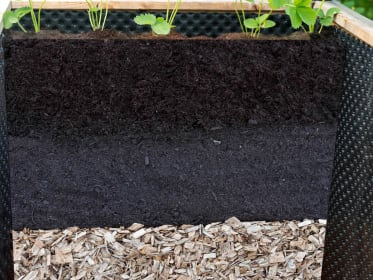
The layers in the raised bed
Your raised bed works in layers: The filling material consists of cuttings, compost and soil and is finer towards the top. The different structures of the material aerate the raised bed and provide an optimal supply of nutrients. What's more, the plants grow better thanks to the higher ground temperature and the higher moisture content.
How it's done
Three steps to a filled raised bed
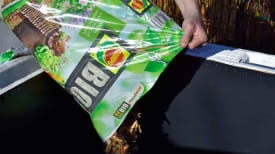
1
Create the foundation with wood chippings
The lowest layer consists of tree cuttings or wood chippings and ensures good aeration.

2
A middle layer of compost
The components in the layer above it (compost, garden soil and green waste) facilitate active soil life and are important nutrient suppliers.
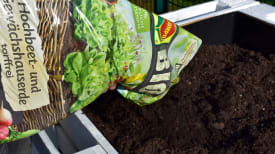
3
Fill with raised bed soil
The final layer is the potting soil for greenhouses and raised beds. It provides the plants with an optimal foundation for growth. If the level drops due to decomposition, simply top up with new soil.
Our tip:
The rule of thumb for the filling material is as follows: 30% wood chippings, 40% compost and 30% raised bed soil. Fill the raised bed up to about 15 cm below the rim.

Plant the raised bed
Since a raised bed provides for plants so well, you can put plants closer together than in a garden bed. Simply plant the varieties that you love! It is advisable to start with plants with a high nutrient uptake, as an abundance of nutrients are available in the new raised bed. These include tomatoes, cucumbers, cabbage, potatoes, courgettes and pumpkin. These vegetable varieties in particular love an extra dose of fertiliser. Nasturtium – a good herb for seasonings – can hang decoratively from the edge of the bed. Start by seeding plants with a low nutrient uptake such as beans, peas, salad, radishes, spinach, carrots and leeks once the first vegetables have been harvested and there is space in the raised bed again. Then plant strawberries as well.
Flower boxes at the 'feet' of the pallets not only look pretty, they are also useful. Flowering plants in boxes are true bee magnets. The hard-working animals pollinate both your flowers and crop plants. So, there is nothing standing in your way of a rich harvest.




